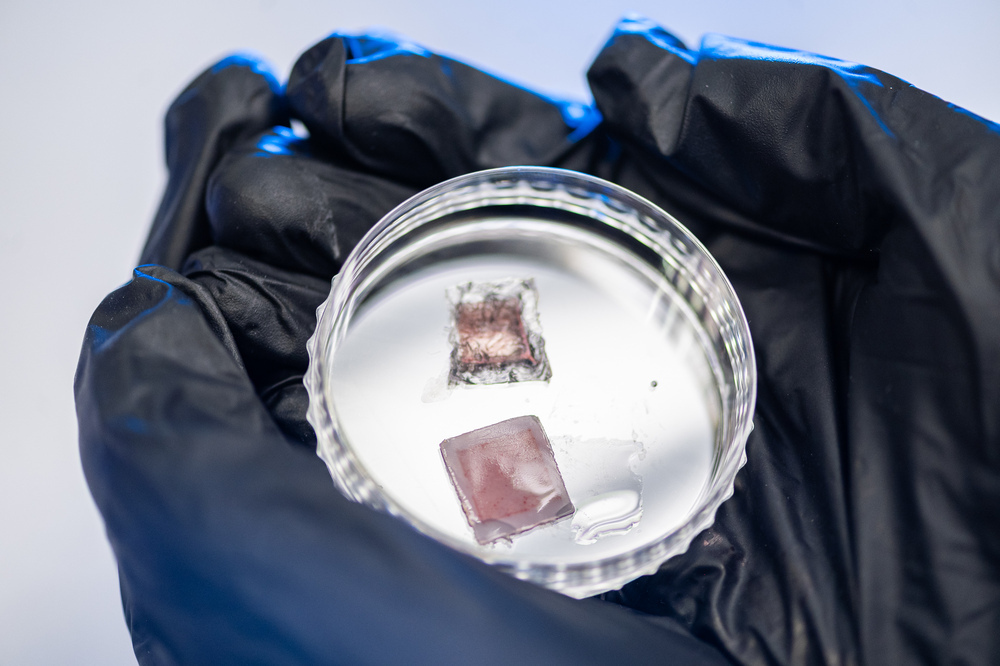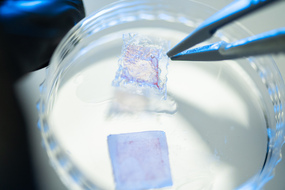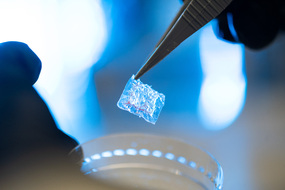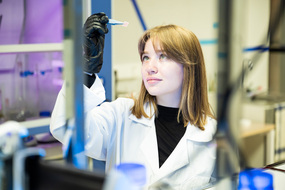Researchers at the MISIS University have developed a prototype of a polymer patch designed to prevent the recurrence of malignant tumors by releasing chemotherapy drugs in a controlled manner over the course of a year. The patch is implanted at the site of the primary tumor removal, ensuring that the drugs are delivered directly to the area where residual tumor cells are concentrated. The biopolymers composing the patch safely dissolve in the body within
The short-term impact of intravenous chemotherapy is often ineffective, as only up to 15% of malignant cells can start dividing at any given time. Increasing the drug dosage poses a serious threat due to toxicity. Prolonged exposure to moderate concentrations of therapeutic agents is most effective. To address this, NUST MISIS researchers have developed special patches for gradual drug release and tested them in vitro on tumor cells. The substrate is made of the synthetic polymer polycaprolactone (PCL), which is safe for humans and provides structural integrity and stable, targeted drug release. The patch’s thin, multilayer coating, approximately 200 nm thick, contains the drug doxorubicin. Layers are applied to the substrate using aqueous polyelectrolyte solutions, allowing precise control over the drug quantity. The platform’s coating consists of 30 alternating “empty” and drug layers. The patches demonstrated prolonged (over 6 months) and even drug release in research findings detailed in the scientific journal ACS Applied Bio Materials (Q1).
“The drug coating is thin and fragile; it cannot be easily implanted without a platform. We chose polycaprolactone as the substrate material for its safety, elasticity, and slow degradation. These qualities maintained the patch’s integrity while releasing the drug over a year. Since the patch dissolves, this ability will help patients avoid a second operation for removal, reducing the risk of complications,” explained Elizaveta Kudan, Ph.D., Head of the Tissue Engineering and Regenerative Medicine Laboratory at NUST MISIS.
In the future, the local chemotherapy platform may be used in early-stage cancers with a high likelihood of recurrence, such as ovarian cancer or brain tumors. Implanting such a patch directly in the tumor area will reduce drug dosages and minimize overall toxicity to healthy tissues, thereby increasing treatment success.
“Chemotherapy efficacy is limited by many factors, the most significant being the toxicity and drug resistance of chemotherapy agents. Intravenous administration often leads to explosive drug release in the blood, followed by a drop in concentration to non-therapeutic levels. Such fluctuations can cause treatment instability and reduce overall chemotherapy effectiveness, as not all tumor cells are treated simultaneously. The polymer platform can release drugs for up to a year and fully dissolve in the body within two to three years,” said co-author Amina Voznyuk, an iPhD student at the Institute of Biomedical Engineering at NUST MISIS.
Researchers plan to conduct testing of the patch in vivo to evaluate its effectiveness and safety, studying the scalability of platform production for clinical use, and optimizing the design for better drug release.
Federal Center of Brain Research and Neurotechnologies of the Federal Medical Biological Agency of Russia and the Medical Genetic Research Center named after Academician N.P. Bochkov have already shown interest in the research.
The studies are part of NUST MISIS’s strategic project Biomedical Materials and Bioengineering under the Russian Ministry of Education and Science’s Priority-2030 program.






